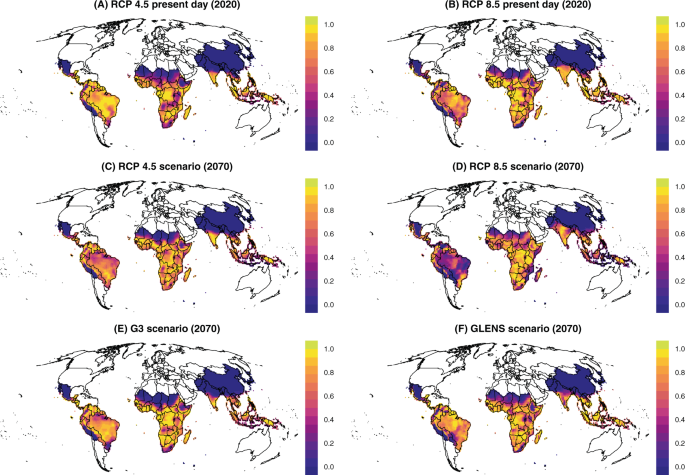Solar radiation management (SRM), a controversial geoengineering strategy that could be deployed to reduce global warming, would risk the health of billions of people living in tropical countries who are at risk of malaria, according to scientists led by a team at Georgetown University Medical Center in the United States.
The research team says that although a handful of studies have looked at other possible health impacts, such as urban heat, this is the first to look at how geoengineering could impact the burden of infectious diseases. Their study appeared Wednesday in the journal Nature Communications.
“Solar geoengineering is often framed as a stopgap measure to decrease the magnitude, impacts, and injustice of climate change,” said the study authors, who hail from Bangladesh, South Africa and Germany, as well as the U.S. “However, the benefits or costs of geoengineering for human health are largely unknown.”
Other diseases, such as dengue fever and the Zika virus, also are expected to pose a greater risk because of climate change. In Africa, deaths from yellow fever could increase by 10% to 25% by 2070, depending on the warming scenario and how well vaccination coverage works.
Malaria in particular promises to be a challenge because it adapts more readily to cooler temperatures. Malaria transmission peaks at 25°C, and a planet too hot for humans is also too hot for malaria transmission, says lead author Dr. Colin Carlson, of Georgetown’s Center for Global Health Science and Security.
The authors found that using SRM, by intentionally adding aerosols into the stratosphere to cool the tropics, could protect some people living at high elevations in East Africa but it would increase malaria transmission in lowland sub-Saharan Africa and southern Asia.
Places like Ethiopia, Burkina Faso in the Sahel, parts of India, or high in the Andes mountains might benefit. Parts of Brazil, Peru, Ecuador, Venezuela and Mozambique were all countries that would see a decreased risk of malaria at high levels of global warming.
But not necessarily, if we intentionally cool the planet. The research is based on climate models that identify the temperatures at which the malaria-carrying Anopheles mosquito is most adept at transmitting the disease, and how many people live in places where that’s possible. The scientists ran both medium and high warming scenarios for the study, comparing the results with and without SMR geoengineering.
“The implications of the study for decision-making are significant,” says Carlson. “Geoengineering might save lives, but the assumption that it will do so equally for everyone might leave some countries at a disadvantage when it comes time to make decisions.”
Carlson notes that geopolitical tensions could be heightened by such decisions, an issue at the core of controversy over geoengineering practices, their unknown impacts and whose voices are included when negotiating their use.
“We’re so early in this process that the conversation is still about increasing Global South leadership in geoengineering research,” Carlson says. “Our study highlights that the frontlines of climate injustice aren’t one monolithic bloc, especially when it comes to health.”

Did you like it? 4.5/5 (25)








